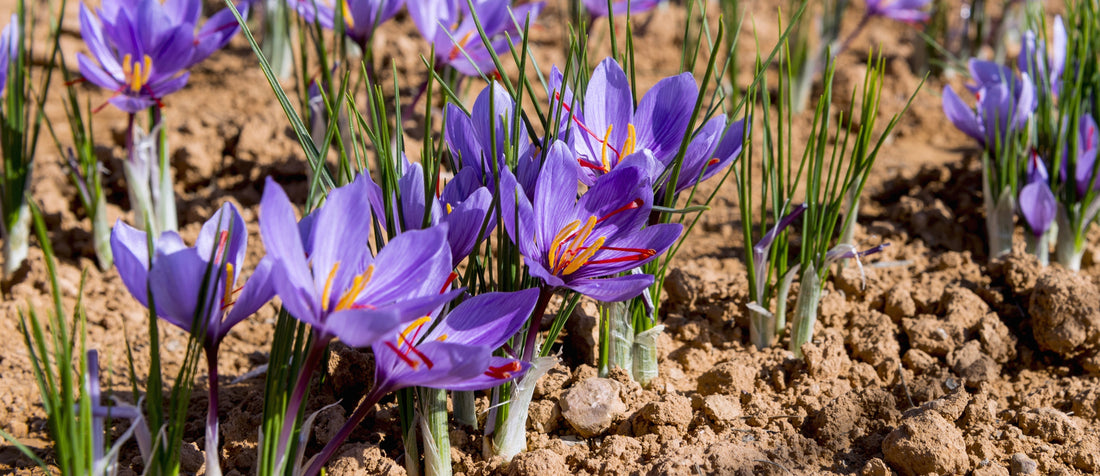
The flowering stage in saffron cultivation
Share
After months of underground preparation, careful tending, and seasonal patience, October brings saffron’s most spectacular transformation—the flowering stage. This is the moment every saffron grower waits for: when the fields erupt in a sea of delicate purple flowers, each one holding the prized red stigmas that will become the world’s most valuable spice.
While the saffron plant (Crocus sativus) has a year-long growth cycle, this phase—just a few short weeks—is the most visible, vibrant, and magical of all.
What happens during the saffron flowering stage?
In early October, as temperatures cool and moisture returns to the soil, the saffron corms respond by sending up flower buds. These buds often emerge overnight, pushing through the soil to reveal elegant, six-petaled purple blooms.
Each flower typically contains:
- 3 bright red stigmas – the actual saffron threads
- 3 yellow stamens
- 6 soft, lilac-colored petals
What makes this stage unique is how quickly it happens. A saffron field can appear empty one day and bloom in full the next. The entire flowering period lasts only 2–3 weeks, with peak bloom typically lasting just a few days.
Why flowering is the most critical moment
The flowering stage is beautiful—but also high-stakes. Here’s why it’s so important:
- Timing is everything – Flowers must be picked the same day they bloom, ideally early in the morning before the sun wilts them.
- Quality depends on freshness – The sooner stigmas are harvested, the better their color, aroma, and flavor.
- Each corm produces only one flower (sometimes a few more), making every bloom count.
In other words, saffron flowering is brief, intense, and labor-intensive—a true race against time.
How farmers handle the flowering stage
Saffron farmers must be alert and ready as soon as the first flower appears. Here’s how they manage this stage:
1. Daily field checks: Fields are checked every morning, often at dawn, to spot newly emerged flowers.
2. Hand harvesting: Each flower is picked by hand, gently plucked to avoid damaging the fragile stigmas inside.
3. Immediate processing: Harvested flowers are taken to a clean space where the three red stigmas are separated, dried, and stored. Timing is critical—delays can reduce saffron’s quality.
4. Avoiding Rain: Moisture can damage the delicate flowers. Farmers often avoid watering during flowering and rush to harvest before rain.
Sustainability and Flowering
Because each saffron corm produces a limited number of flowers, sustainable farming practices—including corm care during earlier stages—are essential to ensure strong flowering each year.
A successful flowering season reflects the cumulative effort from planting, sprouting, vegetative growth, and corm development. Every stage before this one directly impacts the size and quality of the saffron yield.
Final thoughts: The saffron flowering stage in October is the heart of the Crocus sativus lifecycle. It's a fleeting, breathtaking moment when months of care finally pay off in vivid color and harvestable gold.
For farmers, it’s a time of long days, early mornings, and careful work. For the rest of us, it’s when the world’s most luxurious spice is born—thread by thread, flower by flower.
